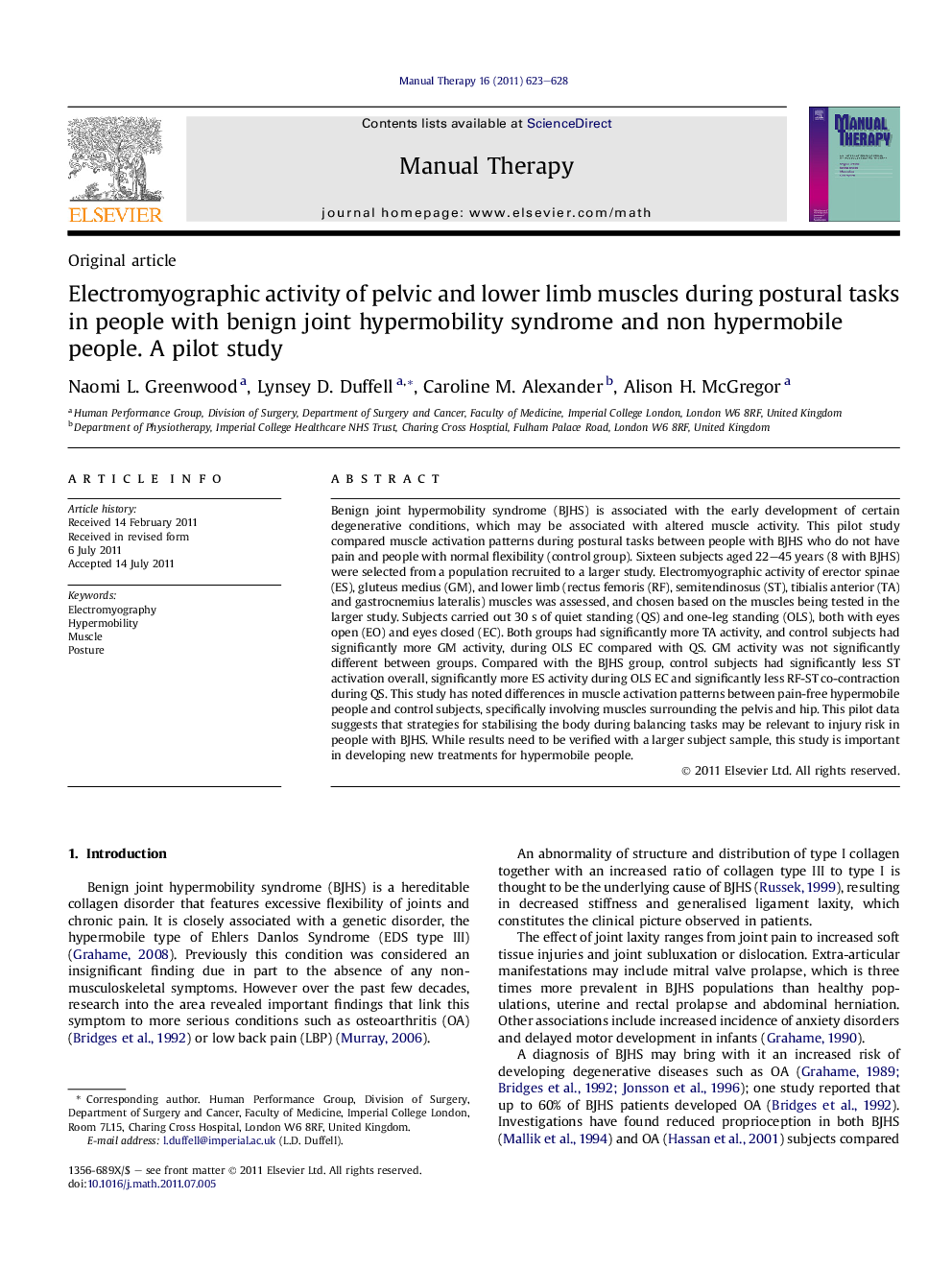| کد مقاله | کد نشریه | سال انتشار | مقاله انگلیسی | نسخه تمام متن |
|---|---|---|---|---|
| 5864805 | 1135938 | 2011 | 6 صفحه PDF | دانلود رایگان |
عنوان انگلیسی مقاله ISI
Electromyographic activity of pelvic and lower limb muscles during postural tasks in people with benign joint hypermobility syndrome and non hypermobile people. A pilot study
دانلود مقاله + سفارش ترجمه
دانلود مقاله ISI انگلیسی
رایگان برای ایرانیان
کلمات کلیدی
موضوعات مرتبط
علوم پزشکی و سلامت
پزشکی و دندانپزشکی
طب مکمل و جایگزین
پیش نمایش صفحه اول مقاله

چکیده انگلیسی
Benign joint hypermobility syndrome (BJHS) is associated with the early development of certain degenerative conditions, which may be associated with altered muscle activity. This pilot study compared muscle activation patterns during postural tasks between people with BJHS who do not have pain and people with normal flexibility (control group). Sixteen subjects aged 22-45 years (8 with BJHS) were selected from a population recruited to a larger study. Electromyographic activity of erector spinae (ES), gluteus medius (GM), and lower limb (rectus femoris (RF), semitendinosus (ST), tibialis anterior (TA) and gastrocnemius lateralis) muscles was assessed, and chosen based on the muscles being tested in the larger study. Subjects carried out 30Â s of quiet standing (QS) and one-leg standing (OLS), both with eyes open (EO) and eyes closed (EC). Both groups had significantly more TA activity, and control subjects had significantly more GM activity, during OLS EC compared with QS. GM activity was not significantly different between groups. Compared with the BJHS group, control subjects had significantly less ST activation overall, significantly more ES activity during OLS EC and significantly less RF-ST co-contraction during QS. This study has noted differences in muscle activation patterns between pain-free hypermobile people and control subjects, specifically involving muscles surrounding the pelvis and hip. This pilot data suggests that strategies for stabilising the body during balancing tasks may be relevant to injury risk in people with BJHS. While results need to be verified with a larger subject sample, this study is important in developing new treatments for hypermobile people.
ناشر
Database: Elsevier - ScienceDirect (ساینس دایرکت)
Journal: Manual Therapy - Volume 16, Issue 6, December 2011, Pages 623-628
Journal: Manual Therapy - Volume 16, Issue 6, December 2011, Pages 623-628
نویسندگان
Naomi L. Greenwood, Lynsey D. Duffell, Caroline M. Alexander, Alison H. McGregor,